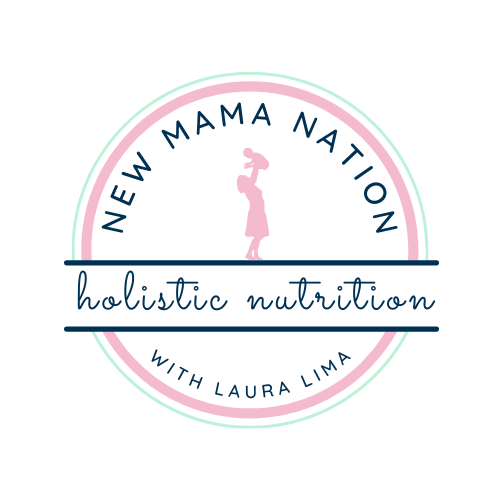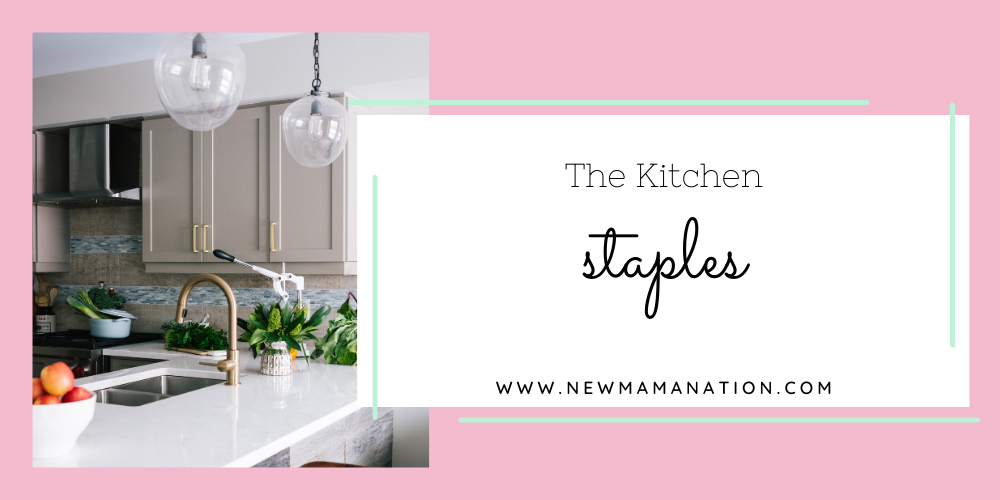Would you just love to start eating healthily, like, yesterday, but you look around at your kitchen and think, “there is no way that is happening anytime soon”? You see a mishmash of packages, jars, and bottles of things that you’re pretty sure don’t resemble anything close to healthy.
Fret not; this is where I come in.
I’m going to give you a rundown of the main items that should be in your kitchen when you’re ready to start a healthy eating routine. This list is by no means exhaustive, but will give you the main staples that should be on hand to get you started on your journey.
Truly, if you just start by incorporating a few of these items (especially if they replace the unhealthier versions), you’ll already be well on your way to vast changes in your health for the better. It doesn’t take drastic measures in order to start feeling better, gaining energy, losing weight, easing digestion, and so on… it’s as simple as implementing a few “ins and outs”. For example, in with the butter, out with the margarine. In with the maple syrup, out with the refined sugar. And on it goes.
Are you ready to get started? Let’s do this!
Butter
For frying eggs or baking of any kind, and I also love stirring it in to any warm dishes (ex: veggies, rice, quinoa). It melts in and adds a delicious flavour, as well as amazing vitamins and fat. Yes, butter gives us healthy fat… how great is that?!
Olive Oil
For making salad dressing and pouring over veggies once they’ve been cooked.
Coconut Oil (full flavour or “neutral taste”)
Full flavour for adding to smoothies or baking, and neutral taste for frying in (ex: veggies, fish, or meat). Both types of coconut oil are available through the Orphée and Goodness Me! brands.
Balsamic Vinegar
For making delicious salad dressing along with the olive oil. And also, you could get any of these instead: apple cider vinegar, red wine vinegar, white wine vinegar.
Real Sea Salt
For cooking with and adding to foods to provide extra minerals (and flava!). I love the Redmond brand… it’s simply called “Real Salt”.
Maple Syrup or Raw Honey
For making delicious treats and also sweetening up plain yogurt. Oh yeah!
Stevia
For adding to tea or coffee (or Healthy Hot Chocolate or an Iced Green Tea Latte!). I always keep both the original flavour as well as the French Vanilla on hand… and I buy the NOW brand of liquid stevia.
Veggies and Fruits (ex: romaine/spinach/mixed greens, apples, bananas, frozen berries)
For adding to smoothies and eating delish salads, for cooking the veggies to add to meals and also eating them raw with some hummus or bean dip, and for slicing up the apple and dipping it in almond butter. Yum!
Canned Fish
For topping salad with in order to add awesome protein and fat. I love the Raincoast brand, as their cans are BPA-free, they add sea salt (not table salt), and their fish is only cooked once its in the can – rather than also before it goes in the can, like most other companies. This helps to preserve more nutrients. My faves are the pink salmon and sardines. Yes, you heard right… sardines. 🙂 I used to be afraid of them, thinking I would hate the taste, but I actually totally enjoy them. When buying canned fish, don’t get boneless or skinless – you want the minerals and good fats you get from them! Plus, once you mash it in a bowl, you seriously can’t even tell they’re there.
Nuts and/or Seeds (ex: almonds, walnuts, Brazil nuts, pumpkin seeds, hemp hearts)
For snacking on (if you get hungry between meals; otherwise try not to snack), and for adding to recipes to make them even better. I love adding hemp hearts to my smoothies to add extra protein, and also, toasted pumpkin seeds on a salad? Mm-mm-mm-mm-mmm.
Eggs (ideally pasture-raised)
For making a delicious breakfast (or any other meal, really) and providing awesome vitamins, minerals, fat, and protein. Pasture-raised hens that are allowed to run around outside and eat their natural diet means that their eggs will be top-notch in the health department.
Meat (ideally naturally raised – free of antibiotics and added hormones, and grass-fed if possible)
For eating as a component of some of your meals, giving you great nutrients and keeping your blood sugar steady. Naturally raised meat, just like with eggs, provides more nutrients without the bad stuff like antibiotics or added hormones. Plus, if the animal is allowed to eat grass, their meat is more nutrient-rich and has a better balance of omega-3 and -6 (exclusively grain-fed animals have more omega-6 in their meat, which tends to be pro-inflammatory, while omega-3 is anti-inflammatory). There is a huge difference between conventional, factory-farmed meat and that which has been naturally raised.
Sourdough Bread (either rye or spelt – make sure there is no wheat on the ingredient list)
For enjoying occasionally, perhaps with some eggs or even almond butter with a drizzle (or three) of raw honey on top. (Yes, healthy eating should include this!) Sourdough bread is easier for us to digest and absorb the nutrients from it, and it’s darn delicious. I keep my bread in the freezer so it doesn’t go bad, since a good loaf of bread should not contain preservatives. This way, I can just take out a slice or two as needed.
So there you have it. You now have a list of some of the “goodies” that should be in your kitchen in order to give you a fresh start in a healthy direction. I encourage you to do it in your style, which is either a) doing a few additions at a time, or b) going all out with a complete kitchen overhaul. (I tend to be in the latter category.)
But honestly though, don’t feel that doing everything all at once is the only way to be successful; remember, just a few changes can make a world of difference.
I look forward to hearing how it goes for you and as always, any questions you have. Put it all below! Here’s to getting your healthy kitchen started off on the right foot. 😀

